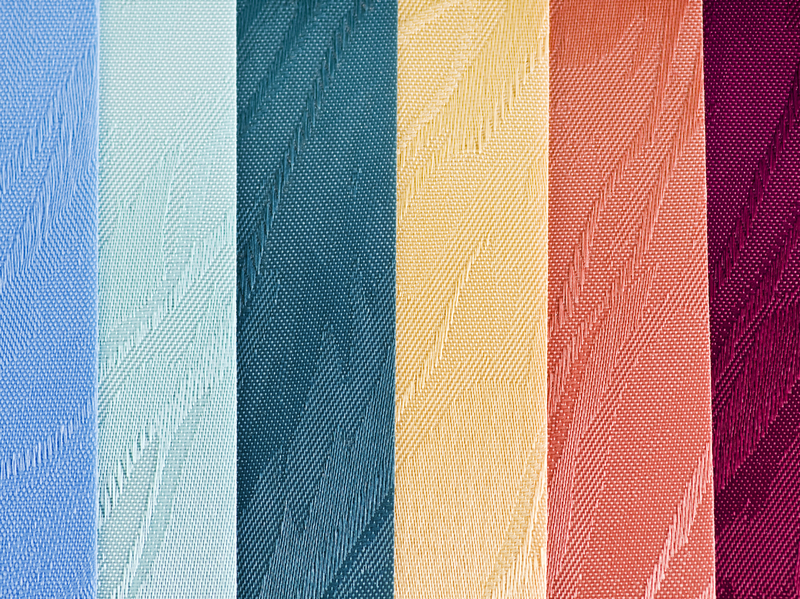With so many choices, we have to ask what is the best fabric for vertical blinds?
As opposed to the horizontal Venetian blinds, vertical blinds, with their sleek, lengthy, panels and endless decorative options have become a trendy window dressing choice. They have always worked well in offices but their increased versatility has given them a new décor status for home applications.
Vertical blinds in South Africa make a lot of sense. Our sunny skies are a national treasure, but blinds protect our furniture and carpeting from fading in the abundant UV light. The fabrics used for today’s vertical blinds are tried and tested, so you’re guaranteed to find the exact right material for whatever application you need.
Before we have fun talking about the various fabrics available for vertical blinds, we first need to canvass other matters.
Critical Factors to Consider for Vertical Blinds
Considered a very affordable window covering, it is not clever to go for the cheapest blinds you can find. Quality vertical blinds, still at reasonable prices, will operate smoothly and last far longer than their cheap cousins. The last thing you need are tracks that jam and panels that deteriorate rapidly.
Vertical blinds are great for awkward applications such as sliding doors and large expanses of glass. The good news is that today, they have developed into more than just a practical way to control sunlight penetration.
Small windows, utility rooms, and staircase windows are ideal places to go for vertical blinds. Homes fitted with vertical blinds, with or without fabric drapes or pelmets, form part of interior décor and design that exceeds mere practicality.
Remember that they, like stack doors, can open completely and hang neatly to the side. Where views and vistas count, vertical blinds offer maximum panoramic potential. Where privacy is paramount at night, for instance, vertical blinds unashamedly ace that requirement.
Right, now let’s explore the big question regarding materials and fabrics that work best for vertical blinds – whether for home or office applications.
Vinyl or Fabric Vertical Blinds, Which is Better?
While fabric vertical blinds fall into the décor genre, and there are endless options, it is not always the practical choice. Here is a guide that you may find helpful:
- Bathroom, Kitchen, Studios, and Utility Rooms – PVC, a popular type of vinyl, is best used whenever water or moisture is a constant factor. So are polyester blinds, because they are waterproof, fade-resistant, and come in beautiful fabric designs.
- Bedrooms, Sitting Rooms, and TV Rooms – fabric vertical blinds work to enhance the aesthetics.
- Holiday homes, Lodges, and State Rooms – faux wood vertical blinds are almost the natural go-to option, but they also look amazing in homes too.
The Best Fabric for Vertical Blinds
There are five main types of fabric for you to make sensible selections for your various applications.
- Standard vertical blind fabric – endless varieties of colours, designs, and textures. In this range, there are lacy and see-through versions to give you indoor privacy without losing light or views.
- Dim-out vertical blind fabric – a.k.a. energy-saving fabrics, made with a silver reflective coating to reduce glare where it matters such as for computer and TV screens.
- Black-out vertical blind fabric – to block out outside lighting.
- Pollergen vertical blind fabric – specially treated to reduce the effects of seasonal allergies.
- Waterproof vertical blind fabric – made from PVC vinyl, or polyester fabrics and can be easily wiped clean and dry.
Classy Fabrics for Vertical Blinds
Pelmets with dummy side drapes provide the ideal frame to hang delicate vertical blinds. It is possible to have blinds made from silk fabric, wool, or natural fabric if you prefer.
For executive guest rooms that are less used and won’t take as much wear and tear as other rooms, these options take vertical blinds to a whole new level of elegance. Hung, in this application, your blinds will resemble drapes but you still control the lighting by slanting the panels as you wish.
How to Clean Vertical Blind Fabric
Vertical blinds are fabulously easy to clean. Remember though to use one hand in support of the panel. Starting at the top of the panels, begin on one end and work your way, top to bottom on each panel till all the drops are done.
Keep the vacuum on light suction mode to avoid distorting, or creasing your panel fabric, and use a soft brush attachment.
Your cleaning routine could be divided into two:
- Regular light cleaning for vertical blinds
Unlined polyester blinds can be vacuumed and even wet-wiped with a clean cloth and a mild soapy solution.
PVC vinyl blinds can even take a mild bleach solution to counter mould generated by the constant moist conditions in a laundry, bathroom, or kitchen
If your blinds are lined with block-out or pollergen material, then avoid the wet-wiping but vacuuming the lined side regularly is a good idea.
Depending on the dust in your area, you may need to do this once a week, once a month, every few months, or just in Springtime!
- Spot cleaning fabric vertical blinds
Should you see a mark on your blinds at any time, fear not. Use a solution of warm (not hot) water and whatever washing powder you prefer. Dip a sponge into your solution and activate the bubbles by dipping and squeezing the sponge a few times. Using just the foam you generated, work it gently into the fibres of your panel fabric.
If it proves stubborn, use an old toothbrush or nailbrush. Use a final rinse of clear water and sponge the area down.
Treat your fabric panels as you would your clothing. A clothing prewash treatment ensures you don’t bleach the fabric on your vertical panels.
Perfect Lighting With the Twist of a Wand
Call on your inner designer and maximise your interior décor with intelligent use of the versatile vertical blind. Seriously, think of the long, sleek lines the panels make and use that to create the illusion of height and grandeur.
You are in charge and with the twist of the wand at the end of your rack of vertical blinds, your fabulous, fabrics – whether slanted or fully closed, will enhance the visual aesthetics of any room.
The best fabric for vertical blinds will depend on your needs and application. Rest assured there are excellent options from practical polyesters and PVCs to faux woods and fabrics to complement your interior décor.
If you need professional advice and friendly assistance for your vertical blinds, contact us today and we will answer any questions you may have.

